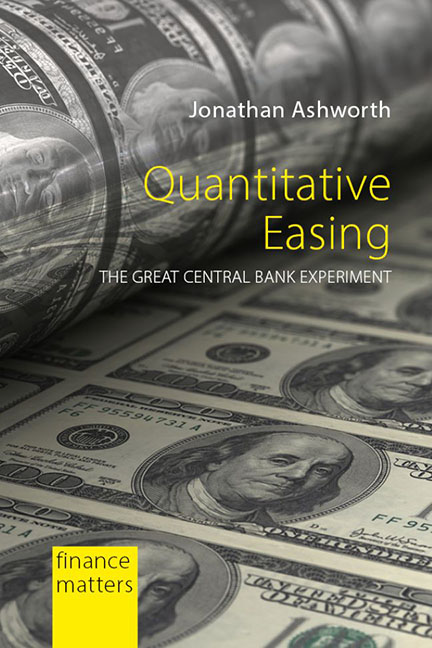Book contents
- Frontmatter
- Contents
- Preface and acknowledgements
- Abbreviations
- Foreword
- 1 Monetary policy-making since the end of Bretton Woods
- 2 Key monetary policy trends and events in the decades before the Great Financial Crisis
- 3 The Great Financial Crisis and the onset of quantitative easing
- 4 How quantitative easing works
- 5 Measuring the effectiveness and impact of quantitative easing
- 6 International spillovers of quantitative easing
- 7 Criticisms and negative externalities of quantitative easing
- 8 Exiting quantitative easing and policies for the next slowdown
- Conclusion
- Notes
- References
- Index
Preface and acknowledgements
Published online by Cambridge University Press: 20 December 2023
- Frontmatter
- Contents
- Preface and acknowledgements
- Abbreviations
- Foreword
- 1 Monetary policy-making since the end of Bretton Woods
- 2 Key monetary policy trends and events in the decades before the Great Financial Crisis
- 3 The Great Financial Crisis and the onset of quantitative easing
- 4 How quantitative easing works
- 5 Measuring the effectiveness and impact of quantitative easing
- 6 International spillovers of quantitative easing
- 7 Criticisms and negative externalities of quantitative easing
- 8 Exiting quantitative easing and policies for the next slowdown
- Conclusion
- Notes
- References
- Index
Summary
Amid impressive economic growth, rising asset prices and generally short and mild recessions in the decades before the Great Financial Crisis (GFC) of 2008– 09, central banks began to believe that they had largely managed to tame the business cycle. However, the onset of the crisis firmly put paid to any such illusions. With the US and major western economies on the precipice of a repeat of the Great Depression, central bankers were forced to innovate rapidly and experiment with new policy tools in an attempt to stabilize collapsing financial markets and their economies. With little room to cut official interest rates further, the US Federal Reserve (Fed) and Bank of England (BoE) adopted a policy of quantitative easing (QE), which together with large government fiscal stimulus programmes, helped their economies avoid collapse and embark on economic recoveries. Over the following decade, QE and other unconventional monetary policies have become key parts of the toolkits of the major central banks as they have largely battled alone to stimulate their economies and raise inflation back to their target levels.
Before the crisis, few economists would have expected to see such momentous changes in monetary policy-making over their careers, if ever. Indeed, any contemporary economist recommending the use of QE in the western economies would have been considered dangerous by the rest of the profession given that some of its most notable recent uses in Weimar Germany and Zimbabwe had resulted in economic calamity amid runaway inflation. This explains why its introduction was greeted by newspaper cartoons showing central bankers distributing large amounts of banknotes to the general public either by throwing them into the air or shovelling them into sacks! At the same time, it was also generally thought that it was not technically possible for either official short-term or longer-term market interest rates to move into negative territory, owing to the ability of the general public and investors to switch into banknotes. At the time of writing, however, a not insignificant portion of developed market sovereign bonds do indeed have negative interest rates!
- Type
- Chapter
- Information
- Quantitative EasingThe Great Central Bank Experiment, pp. vii - xiiPublisher: Agenda PublishingPrint publication year: 2020



